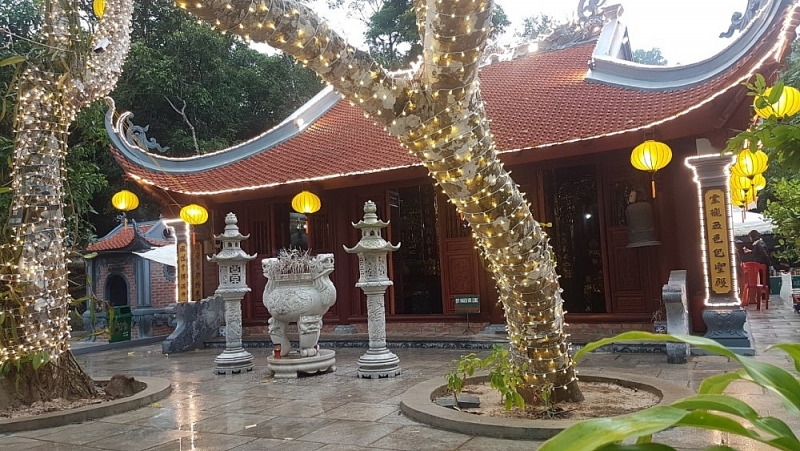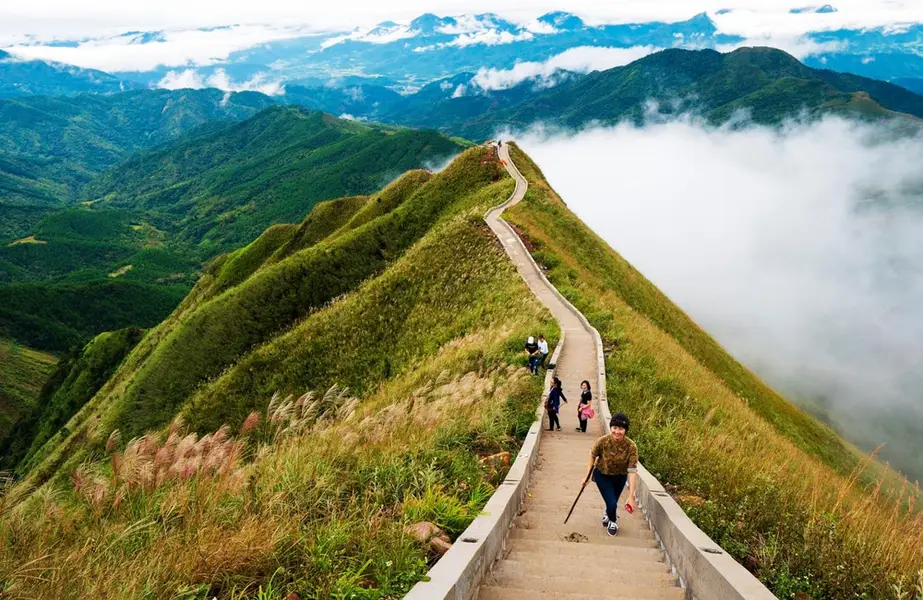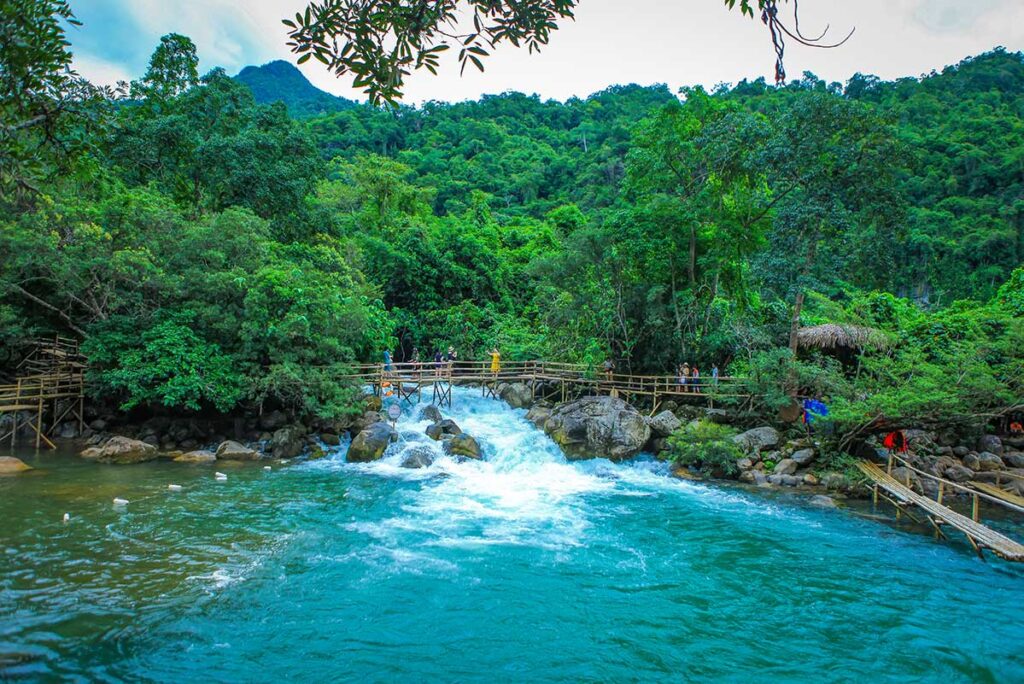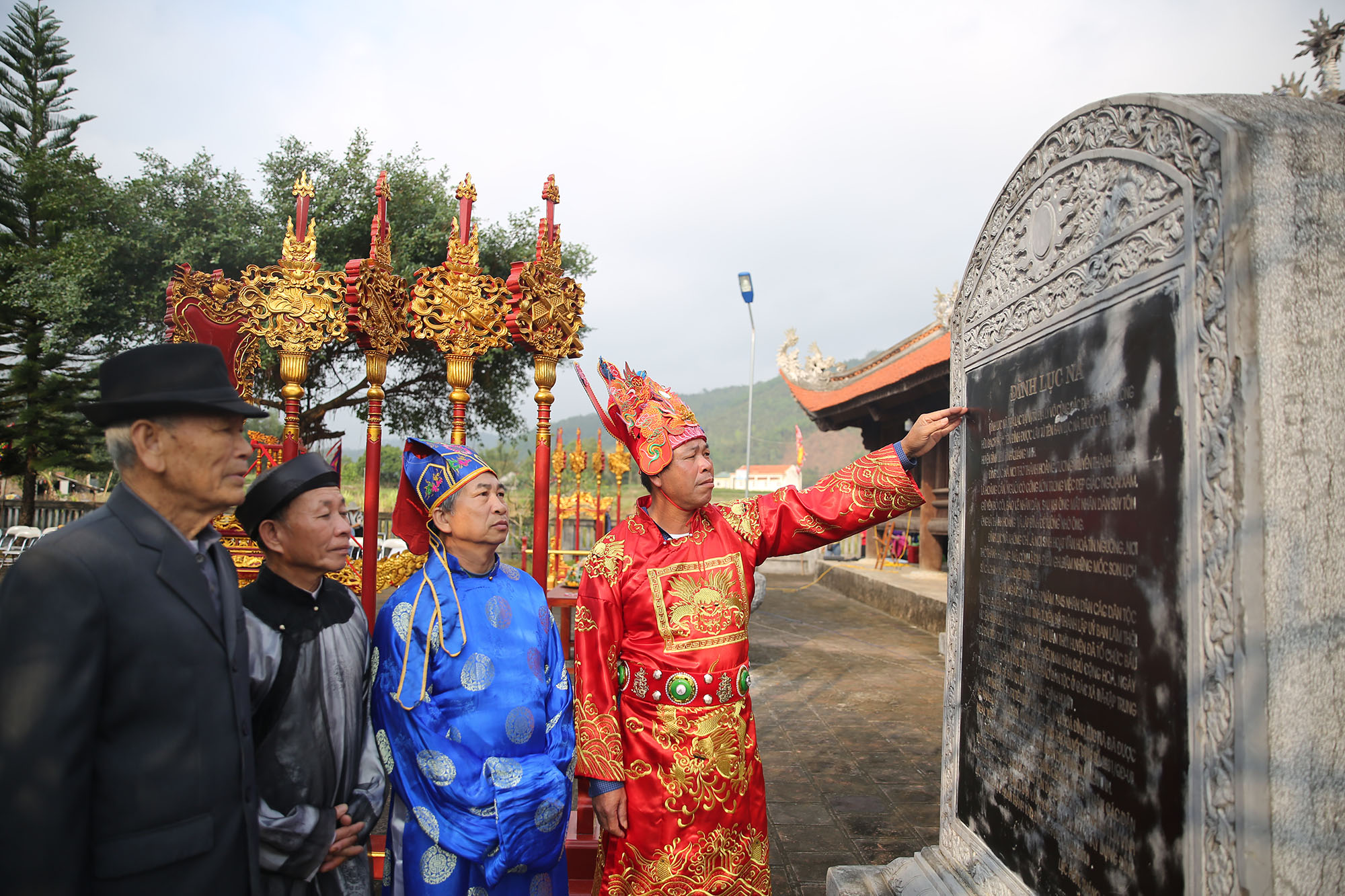Exploring Miếu Ông – Miếu Bà: A Cultural and Spiritual Landmark
Last Updated on 1 January, 2025 by admin
Nestled in the heart of the local community, Miếu Ông – Miếu Bà stands as one of the most significant cultural and historical landmarks in the region. This sacred site is deeply intertwined with local folklore and the spiritual beliefs of the people, making it a must-visit destination for those seeking a glimpse into Vietnam’s rich cultural heritage. Its importance extends beyond religion, serving as a cherished symbol of the region’s history and traditions, attracting visitors for both spiritual and cultural exploration.

History and Significance of Miếu Ông – Miếu Bà
The origins of Miếu Ông – Miếu Bà trace back centuries, making it an integral part of the region’s historical tapestry.
- Historical Roots: Built to honour the deities believed to protect the local villagers, Miếu Ông – Miếu Bà is said to have been constructed during the early settlement of the area. Over generations, it became a central place for worship and community gatherings. Walking through its ancient gates, I felt a profound connection to the past, as though the whispers of prayers from centuries ago still lingered in the air.
- Spiritual Importance: For the locals, Miếu Ông – Miếu Bà is more than just a place of worship—it’s a cornerstone of their identity. It serves as a space where villagers come together to seek blessings, offer gratitude, and strengthen their communal bonds. Listening to the stories shared by a local guide, I learned about the legends surrounding the deities, whose protection and guidance are said to have shaped the fortunes of the community.
Architecture and Scenic Surroundings
The unique architecture of Miếu Ông – Miếu Bà is a visual representation of Vietnam’s rich cultural artistry, seamlessly blending tradition with nature.
- Distinctive Design: The structure’s intricate carvings and vibrant colours reflect the craftsmanship of its creators. The roof, adorned with traditional dragon motifs, and the elaborately carved wooden panels inside the shrine stood out to me as a testament to the skill and devotion that went into its construction. The layout, with its symmetrical balance and harmonious design, embodies the traditional aesthetic of Vietnamese spiritual architecture.
- Tranquil Setting: Surrounded by towering ancient trees, serene ponds, and lush greenery, Miếu Ông – Miếu Bà offers a peaceful retreat from the hustle and bustle of daily life. As I wandered the grounds, the gentle rustling of leaves and the occasional chirping of birds created an atmosphere of serenity, making it easy to see why this place has been a spiritual haven for generations.
Activities at Miếu Ông – Miếu Bà
Visiting Miếu Ông – Miếu Bà is not just about admiring its beauty but also engaging in meaningful experiences.
- Traditional Ceremonies: I was fortunate to witness a local lễ cầu an (peace-seeking ceremony) during my visit. Watching the villagers in traditional attire offering incense and chanting prayers was a deeply moving experience that highlighted the community’s unwavering faith and devotion.
- Exploring History: The site is rich with historical artefacts, from stone steles engraved with poetic inscriptions to vibrant câu đối (parallel sentences) that convey philosophical teachings. A guide explained the symbolism behind these treasures, offering fascinating insights into their cultural significance.
- Photography and Reflection: The captivating architecture and surrounding natural beauty provided endless opportunities for photography. Standing by the ancient trees, with the miếu in the background, I felt compelled to capture the moment—not just with my camera but in my memory as well.
Tips for Visiting Miếu Ông – Miếu Bà
To make the most of your visit to Miếu Ông – Miếu Bà and ensure a respectful and meaningful experience, here are some detailed tips based on both practical considerations and cultural sensitivity:
Dress Appropriately
Given the sacred nature of Miếu Ông – Miếu Bà, dressing modestly and respectfully is crucial. Opt for clothing that covers your shoulders and knees, such as long skirts, trousers, or blouses. Avoid wearing flashy outfits or overly casual attire like shorts, tank tops, or flip-flops, as they may not align with the solemnity of the site. A light scarf or shawl can be a versatile addition, allowing you to cover up as needed while also protecting you from the sun.
Respect the Rules and Local Customs
The caretakers of Miếu Ông – Miếu Bà work hard to maintain its sanctity and historical integrity. Respect their guidance by refraining from touching artefacts, stepping into restricted areas, or making loud noises. It’s also important to be mindful of cultural norms; for instance, bowing slightly when passing the main altar or speaking in hushed tones to maintain the tranquillity of the space. If unsure about local customs, don’t hesitate to ask the caretakers—they’re usually happy to share their knowledge.
Mind the Environment
Miếu Ông – Miếu Bà is not just a sacred site; it’s also a natural haven surrounded by lush greenery and tranquil ponds. Help preserve its pristine beauty by disposing of waste responsibly. Bring along a reusable water bottle and avoid using single-use plastics that could harm the environment. Even small actions, such as picking up a stray piece of litter, can contribute to maintaining the area’s charm and cleanliness for future visitors.
Timing Your Visit
To experience Miếu Ông – Miếu Bà at its best, consider visiting early in the morning. The peaceful ambiance, soft morning light, and gentle breeze make it an ideal time for reflection and exploration. Alternatively, visiting during major festivals, such as the annual ceremony on the 1st of March (lunar calendar), allows you to witness traditional rituals and vibrant community celebrations. Be prepared for larger crowds during these events, but also for a more dynamic and festive atmosphere.
Additional Tips
- Bring Essentials: Comfortable shoes are recommended, as you may need to walk over uneven terrain. A small bag for your belongings, including water, sunscreen, and a hat, can also enhance your visit.
- Engage Respectfully with Locals: The caretakers and villagers around Miếu Ông – Miếu Bà are often happy to share stories about its history and traditions. A warm smile and polite questions can lead to meaningful conversations that enrich your experience.
- Photography Etiquette: While the site is a beautiful place for photos, avoid taking selfies or using flash near the altars out of respect for its spiritual significance. Always ask permission before photographing local people.
By keeping these tips in mind, you can ensure a respectful, enriching, and memorable visit to Miếu Ông – Miếu Bà, allowing you to fully appreciate its cultural and spiritual significance.
Conclusion
Miếu Ông – Miếu Bà is more than a historical site—it is a living testament to the cultural and spiritual fabric of the local community. Its intricate architecture, tranquil surroundings, and deep cultural significance offer visitors a unique opportunity to connect with Vietnam’s rich heritage.
For me, the visit was both enlightening and inspiring. Sitting beneath the ancient trees and gazing at the sacred shrine, I felt a profound sense of peace and admiration for the generations who have cherished and preserved this treasure. If you’re looking to delve into Vietnam’s spiritual and cultural heart, Miếu Ông – Miếu Bà is an experience you won’t want to miss.




